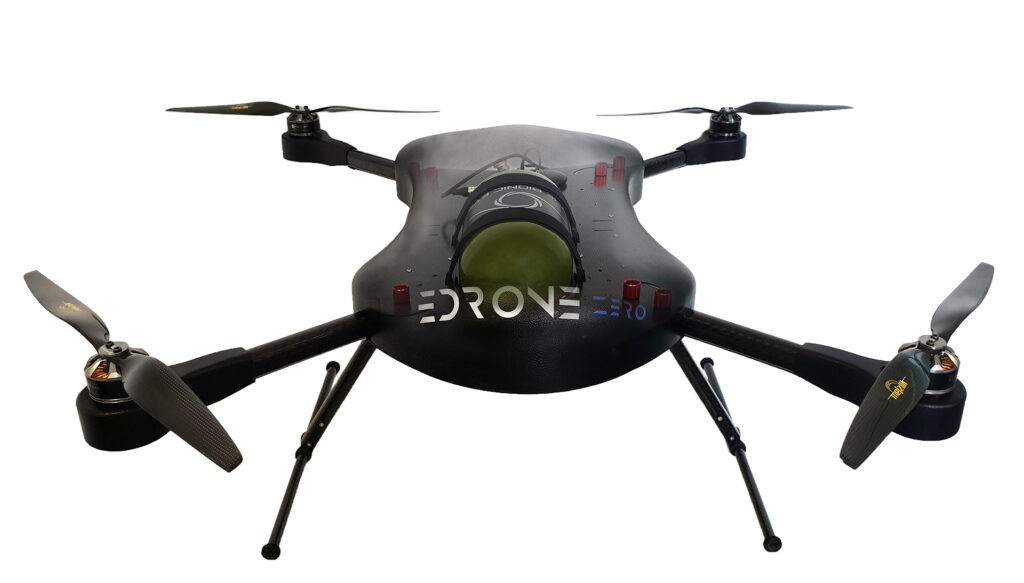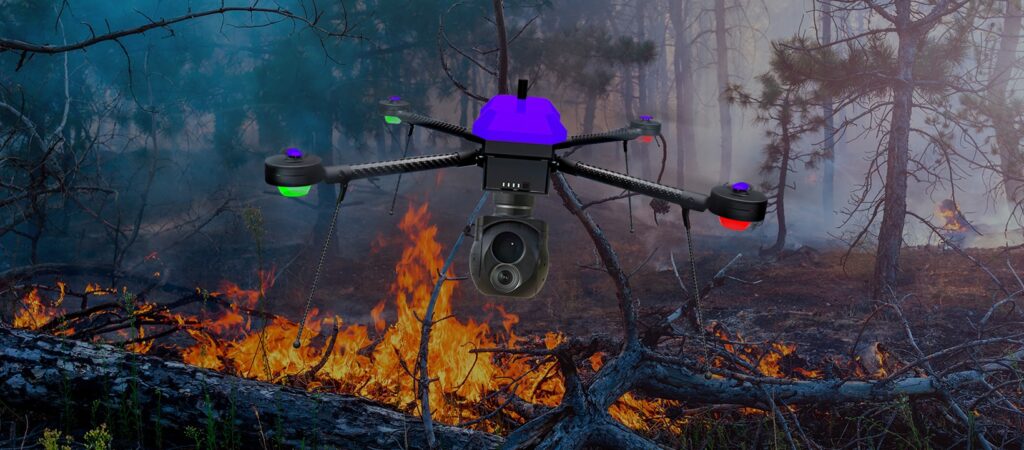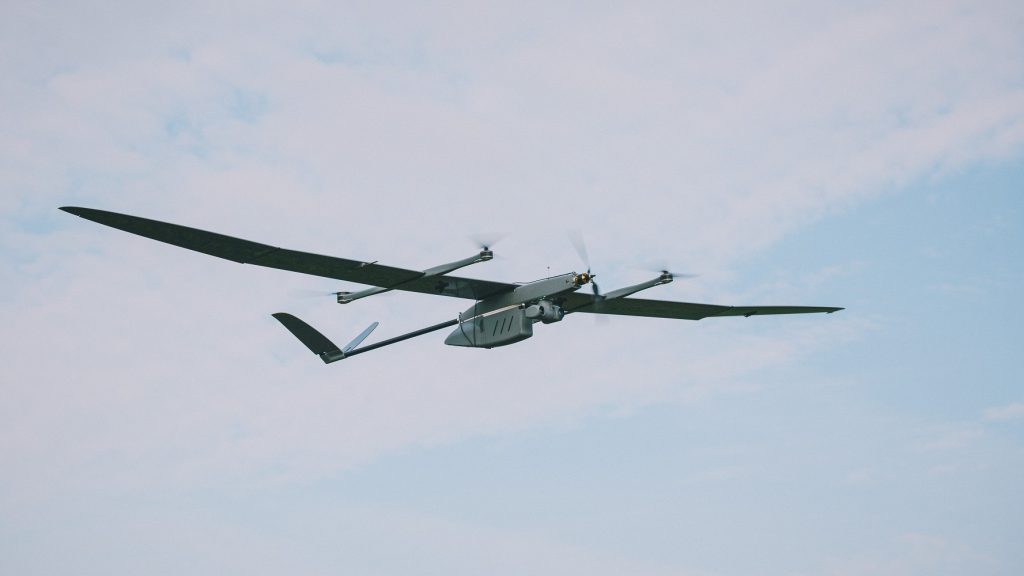Kristo Reinsalu, the general manager of the Estonian Aviation Cluster, writes that if Estonia wants to remain one of the world’s most innovative nations, it seriously needs to look into the advancement of using and developing drones, draft its own drone laws and set up an ambitious national programme for drone technology.
The South Korean pavilion at EXPO 2020 in Dubai comprises a total of 1,597 spinning cubes, symbolising the mobility of the country and its people. Inside it, augmented reality enables visitors to explore a virtual city, built using smart infrastructure technology. By scanning a QR code into your mobile, a hydrogen-powered Hyundai Motors drone lands at a 21st-century airfield.
At the next viewing point, the impressive drone hovers in the sky, 100 metres above Dubai. So real and so convincing, which makes you wish that future was now. Just a few hours later I’m discovering myself in the middle of the desert, at an aerodrome inside Emirates Pavilion. We’re soon heading for the clouds, in Tesla-like silence, in a cutting-edge hydrogen and solar-powered plane. Virtual reality headsets allow us to enjoy the cabin service provided by the world’s best airline.
The world’s most innovative countries are telling stories about what the future holds. But how about us? For the most part, our story is all about “e-Estonia” – Estonia as a digital country. While others are striving to get somewhere, it seems we’ve already arrived.
We need to set new goals
“The achievement of one goal should be the starting point of another,” Alexander Graham Bell, who invented telephone, once said. Being pleased with how far you’ve come is one thing, but if you are not setting new ambitious goals, you will soon discover losing ground. For that reason, we ought to be shining more of the spotlight on areas we’re determined to be the best in years to come.
What kind of stories might we be telling at EXPO 2025 in Osaka? My guess is that the keywords will be drones and autonomous mobility. For example, Skycorp, an Estonian company, has used hydrogen technology to extend the flight time of drones from minutes to as much as hours at a time. Its smart drones, with their futuristic look, go by the name of e-Drone Zero. By creating a fully autonomous structure it will be possible to reduce not only the need for expensive manned flight, but also movement on the ground.

If we’d used drones to deal with the COVID-19 crisis in Estonia the way they did in Dubai, we might have been at the forefront in Europe by now. Last July, the United Arab Emirates unveiled its new drone laws – the most exemplary of their kind in the world. They enable drones to be used in the transporting of medicines, in police patrols and in issuing instructions to citizens, all of which were done during the COVID-19 pandemic.
If we want to remain one of the world’s most innovative nations, I implore Estonia to go much further than the European Union requires us to. Why not draft our own drone laws and, led by the example of the Emirates’ Sky Dome, use them to establish virtual airspace infrastructure taking in the whole of Estonia? That way, all existing and future airports, airstrips and airfields (including vertiports) would be covered in one ecosystem in public space.

To attract the world’s best companies to develop and test their products and services in Estonia, I propose setting up an ambitious national programme for drone technology. Global aviation today moves on the highway at a speed of 120 km/h (75 miles per hour). We have to invest if we want to keep up.
Strong leadership drives to success
The United Arab Emirates have led the way in all things drone-related. For starters, they introduced the Drones for Good awards, which have gained widespread international recognition, as far back as 2014. More recently, following the latest Dubai Airshow, a programme to enable drone transportation was launched. The aim is to use these services to position Dubai as one of the smartest cities on the planet.
While the airshow was taking place, American company Matternet unveiled drones that are the first in the world to transport Pfizer vaccines between locations. By the start of 2022, these drones will form an autonomous flock for the transporting of urgent medical shipments weighing up to two kilograms (4.4 pounds) between health-care institutions in the United Arab Emirates’ capital, Abu Dhabi. They will move within a network of 40 flower-shaped drone stations, which in appearance are not altogether dissimilar to the Estonian-made Cleveron 401 Pickup Tower.

We have to stop with the navel-gazing and start thinking big. Working with the General Motors-backed Cruise, in just a couple of years’ time Dubai will be introducing self-driving taxis. In line with its self-driving transport strategy, the aim is for at least 25% of all trips undertaken in the city to be driverless by 2030.
Estonia should become a role model of regional mobility
Estonia is home to an entire galaxy of innovative autonomous-mobility companies: in addition to the aforementioned Skycorp there are Threod Systems, Hepta Airborne, KrattWorks, AuveTech, Starship, Cleveron and many more yet to come. Why wouldn´t we start dreaming to become a role model of regional mobility if we could establish a nationwide network of climate-neutral aircraft and drones? It could really be the starting point of our future brand and a worthy successor to e-Estonia.

After all, Estonia still has two big advantages of which everyone’s aware. We shall really tap our strengths in IT and mobilise ever-ambitious start-up sector. All what we still lack is a strong leadership on a state level. Whereas other countries have kings and sheiks to take the lead, our “autonomous mobility” champion could well be our president, Alar Karis.
Let’s start first with a memorandum of understanding with all involved parties and escape from the disastrous comfort zone, where we have stuck. The Osaka EXPO – which is to say, our next innovation Olympics – is only less than four years away.
The opinions in this article are those of the author. Cover: A drone developed by Estonia-based Threod Systems. Photo by Threod Systems.

